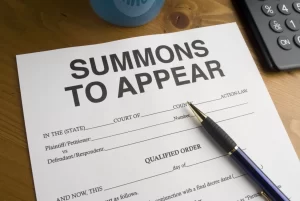How to File Exhibits in Family Court
Family court cases often require the submission of exhibits as evidence to support your case. Exhibits can include financial records, written agreements, photographs, records of communication, or other documents relevant to the case. Knowing how to properly file exhibits with the court is crucial for ensuring they are accepted. Follow these steps when filing exhibits for your family court case.
Determine What Evidence You Need as Exhibits
The first step is deciding what evidence you need to gather as exhibits to support the claims in your case. Think about the core issues involved and what documentation would help prove your side of the story. Examples of common exhibits in family court include:
- Financial records – Tax returns, bank statements, pay stubs, loan documents, receipts, etc. showing assets, debts, income and spending patterns.
- Written agreements – Prenups, postnups, custody agreements, divorce settlement agreements, etc.
- Records of communication – Emails, text messages, letters, voicemails, etc. showing discussions and agreements made.
- Photographs – Pictures documenting injuries, property damage, living conditions of homes, etc.
- Medical records – Documents related to physical/mental health issues of those involved.
- Police reports – Documentation of domestic disputes, abuse claims, or other interactions with law enforcement.
Gather and Organize Your Exhibits
Once you’ve determined what exhibits you need, gather all of these documents and records. Make sure you have original copies if possible. Organize the exhibits chronologically or categorically in a way that tells a clear story for the judge. Keep exhibits from getting disorganized or misplaced.
Assign each exhibit a number or letter to make them easy to reference in court. Create a list documenting each exhibit and its assigned number/letter.
Understand Court Requirements
Before submitting exhibits, understand the procedural rules and requirements of the specific court handling your case. There are usually strict rules regarding the submission deadlines, number of copies required, exhibit list format, and labeling standards.
Ask the court clerk for a copy of the local rules on exhibit submission to ensure full compliance. Failing to follow the requirements could result in exhibits being rejected or excluded.
Prepare Your Exhibits
To prepare exhibits for submission:
- Make sufficient copies – Provide the required number of copies (often 4-5) of each exhibit so each attorney and the judge has one.
- Organize materials – Keep the originals unaltered. Put copies into labeled manila folders or binders for easy access.
- Label appropriately – Label each exhibit clearly with the assigned number/letter and descriptive title according to court guidelines.
- Omit unnecessary materials – Only submit relevant pages of longer documents. Remove duplicates and restrictive pages like attorney/client privileged information.
- Check for objections – Review exhibits that may draw objections from the opposing party and be prepared to argue for their admissibility in court if challenged.
Create an Exhibit List
The court also requires an exhibit list that indexes and identifies each exhibit submitted. The list should follow court formatting rules and include:
- Exhibit number/letter
- Brief exhibit title
- Date of exhibit
- Number of pages
- Unique identifying information like Bates stamps
Submit the exhibit list to the court within the required timeline. Give a copy to the opposing counsel as well. Bring copies of the list to court hearings involving the exhibits.
Submit Exhibits to the Court
Once exhibits are prepared and listed, submit them to the court following all rules on timeline and number of copies. In many courts, exhibits are due a certain number of days before trial. Submit the required number of sets (one for you, one for opposing counsel, one for the judge, etc.)
Hand deliver or mail the exhibits if permitted. Get signed proof of receipt. E-filing exhibits directly to the court may also be an option. Follow up to ensure the court clerk has received the exhibits for filing. Bring extra copies to court hearings as back-ups.
Proper submission well in advance is key – exhibits not filed on time may be excluded from the case.
Use Exhibits at Trial
During court proceedings, refer to exhibits at appropriate times to enter them into evidence. When referencing an exhibit:
- Clearly identify it by number/letter and title
- Explain when and how the exhibit relates to issues in the case
- Ask the judge to admit the exhibit into evidence for consideration
If the other party objects to an exhibit, be prepared to explain why it should be admitted in spite of objections. Entered exhibits become part of the case record and can be invaluable evidence to support your side.
Utilize Technology for Exhibits
Technology can streamline the exhibit process, especially for trials with numerous documents:
- Electronic filing – Courts may allow or require e-filing of exhibits via electronic court document systems.
- Digital displays – project and display exhibits digitally in the courtroom via laptops, tablets, etc.
- Hyperlinked indexes – use software to create a hyperlinked exhibit list that takes the judge directly to specific documents.
- Searchable databases – Database programs can store and organize exhibits for easy search and retrieval.
Get Legal Help
Remember – family court cases often come down to the availability and strength of evidence. Submitting convincing, admissible exhibits can be make or break. Consult an experienced family law attorney if you need help understanding court exhibit rules or determining the best exhibits for your case. They can also file exhibits on your behalf and argue for their admission in court if challenged. With the right exhibits and legal support, you improve your chances of success.
Conclusion
Filing persuasive exhibits takes strategic preparation but is a critical piece of proving your case in family court. By understanding court requirements, meticulously organizing your exhibits, and properly filing them well in advance of deadlines, you optimize their impact. Work closely with your attorney and utilize available technology through the process. Robust exhibits paired with compelling testimonies give you an evidentiary advantage over an opponent who has not prepared documentation. Use these steps for submitting exhibits to help give your side the winning edge.
FAQs About Filing Exhibits in Family Court
What are the main types of exhibits used in family court?
Some of the most common exhibits in family court include financial records, written agreements between parties, communications like emails and texts, photographs documenting issues, police reports, and medical records related to the case.
How many copies of each exhibit do I need to submit?
Most courts require submitting 4-5 sets of copies – one for you, one for the opposing party, one for the judge, one for the witness stand, and one as a back-up set. Always check your court’s specific rules on number of copies.
Can I submit video or audio recordings as exhibits?
Videos and audio recordings can potentially be submitted, but they must follow the court’s rules on these types of electronic exhibits. There are often additional steps needed to authenticate and submit digital files.
What is the best way to organize multiple exhibits?
Organize related exhibits chronologically in labeled folders or binders. An index should accompany them, with exhibits numbered/lettered and described. Keeping them organized helps easily direct the judge to specific documents.
What do I do if the opposing party objects to one of my exhibits?
Be prepared to argue why the exhibit should be admitted despite objections. The judge may ask you both to make arguments for and against an exhibit’s admissibility before deciding whether to allow it.







